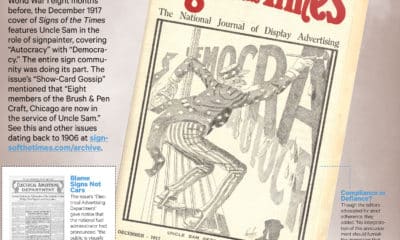When I consider ADA signage, there are a lot of variations and pricing has been all over the place. How do we try to avoid this becoming a commodity like so many other products over time?
The keyword lies within the question: variations. Many signs that have become commodities over time are fairly standard in design, size, shape, color and more. Think restroom signs. Sure, custom restroom signs exist that depart from the familiar pictograms in white on a blue background: stylized “Cowboys” and “Cowgirls” signs in a Western-themed restaurant, for example. Are these more expensive for customers? Of course, which is why the cheap commodity versions dominate the market. The thing about ADA signs, however, is that once they accomplish their ADA goals — the necessary information, braille dots, etc. — there’s room and reason to customize them. ADA signs can complement a design or color theme, reinforce branding, and also just plain be more interesting than commodity versions. Read about five design and production guidelines in “The Basics for Beautiful ADA Signage” by Diane Goforth, owner of Goforth Signs in New York.
Interested to hear how everyone’s 2023 compared with 2022.
While we didn’t quite hear from everyone, a representative cross-section of your peers has already participated in our 2024 Big Survey. And as fortune has it, the Big Survey mailed with the March issue (and was also posted on our site at signsofthetimes.com/big-survey). In the opening section, The Basics, we report on sign companies’ total sales last year and compare them to 2022. In Earnings and Retirement, we ask about personal income last year and expectations for 2024, and if people feel their earnings are keeping up with the cost of living. Finally, in the State of the Industry section, we examine sales volume and net profit changes from 2022 to 2023 and expected changes from last year to this.
How do other successful signshops find more outsourcing and subcontracting opportunities to grow their businesses?
Savvy sign companies, we like to think, consider the wholesalers who offer outsourcing and subcontracting services and also advertise right here in Signs of the Times. Check ’em out! Meanwhile, our Illuminated Signs columnist Eric E. Larsen also took up this question in “To Wholesale or Not to Wholesale?”. You may not find the best companies to work with on the first page of your Internet search, he advises. Similarly, you may find some companies that look a bit “fishy.” Eric likens the experience of finding qualified, reliable outsourcing outfits to buying a used car. You’ve got to check out any subcontractor thoroughly — get behind the wheel and kick the tires, as it were. Find out how long they’ve been in business, projects they’ve contributed to and what their facility and equipment look like. Ask for references. As is often the case in life, the cheapest is rarely the best. Submit fabrication and instructional drawings with a list of materials you expect to use. “Honest wholesale companies will have no problem dealing with your demands and might even work with you on cost,” Eric says.
Want to see your questions featured in this department? Send your emails to: ask@signsofthetimes.com
Advertisement

 Tip Sheet2 weeks ago
Tip Sheet2 weeks ago
 Real Deal2 weeks ago
Real Deal2 weeks ago
 Paula Fargo3 days ago
Paula Fargo3 days ago
 Photo Gallery20 hours ago
Photo Gallery20 hours ago
 Signs of the Times4 days ago
Signs of the Times4 days ago
 News1 week ago
News1 week ago
 Special Report1 week ago
Special Report1 week ago
 News2 weeks ago
News2 weeks ago















